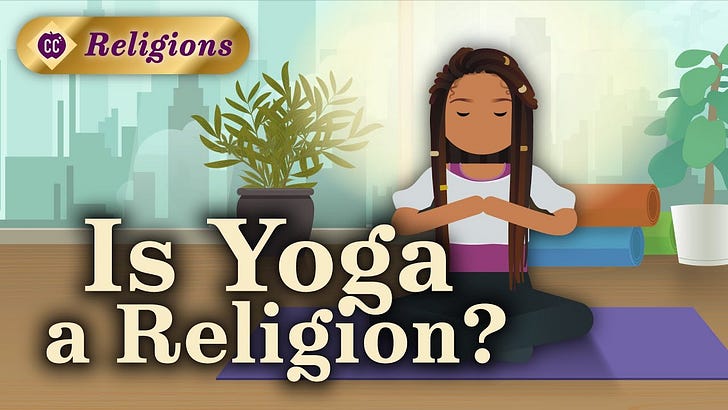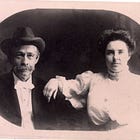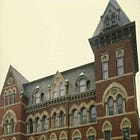As I’ve been writing about the branches of my children’s ancestry this year, I've had to consider many points of view that are very different from my own. Most of those differences are due to the religions practiced by those ancestors.
The history of America was driven by the choices people made, often in the name of their religious traditions. The founding of the British and Dutch colonies was as much about people fleeing from the violence and political upheaval caused by the mixture of religion and government in post-Reformation Europe as it was about conquest by those European powers. Westward Expansion of white American colonists had as much to do with the four major revivalist periods known as the Great Awakening as it did with the desire to exploit resources and crush the people already living in the West.
My recent posts about the families who took the Oregon Trail happened to be about people who belonged to the mainline Protestant denomination called the Christian Church (Disciples of Christ), but there were dozens of groups moving westward together, hoping to find “new land” where they could build a community free of the “outside world” — and we often shy away from talking about the specifics of what that meant.
Sometimes, those specifics involved uncomfortable positions on sexuality.
A Core Belief
Determining the core beliefs of individuals and separating those from the teachings of a larger group is always complicated, at best.
Consider the Oneida Community that existed in upstate New York from the mid-to late-1800s. They formed at the end of the Second Great Awakening, which gave rise to many new religious movements in the United States, such as Adventism, Dispensationalism, and the Latter Day Saint movement. The Oneida famously practiced group marriage, lived communally (in the sense of communal property and possessions), and practiced “male sexual continence” - a concept I won’t go into here, but which is not typically associated with “Christian mores.”
The Oneida community waned, but The Latter Day Saints also have a history involving the practice of polygamy, and they have long struggled with separating the positions of the church as a whole from the individual practices of its members or of groups that broke off from the main church. The struggle has always stemmed from the tension between “orthodoxy” (the official rules of the main group) and “heterodoxy” (the individual freedom of members to be guided by their conscience).
The common thread that seems to bind all religious organizations throughout history is this: how do you convince individuals to accept limitations on their behavior while allowing those same individuals to believe their free will is not at odds with the church?
It’s about power: the balance of power between an organization that can only be as strong as its members allow, and individuals who agree to overlook and tolerate behavior they don’t condone for the sake of maintaining whatever benefits the organization gives them.
Or, to be more concise: it’s about the power to decide who gets to decide.
Conscience versus Conformity
Which brings me to Pride Month, my children, and where the Queer Spectrum fits into our research.
Yes, I buried the lede, and I apologize, but—if you’re someone who isn’t comfortable talking or thinking about this subject, I wanted you to consider the vast diversity of religious thought our ancestors represent. Because at the end of the day, embracing our Queer cousins is not about sex, but about accepting that someone else has fundamental beliefs about themselves that you don’t have.
And those fundamental differences don’t have to keep us apart.

In middle school, my eldest (top row, second from the left) brought home a homework assignment to “write a 350-word essay about a topic in the news” and turned in a passionate and articulate defense of the then-recent legalization of same-sex marriages. The argument turned on the fact that some people who argued against such marriages based their objection on their personal religious beliefs. My brilliant child recognized early on that whether you believe someone is “born that way” or is “making a choice,” the Constitution is supposed to protect people in either case from being forced to practice someone else’s beliefs.
Even at that time (around 2012), most of us didn’t know nearly as much about the variety of human gender and sexuality as we probably do now. I know I’ve learned a ton in the last decade and a half - and I would urge anyone to at least take a few moments to Learn About the Queer Spectrum. But what I remember is how impressed I was that my middle schooler arrived at such a concise legal defense of human rights, before they even understood that fundamental thing about themselves.
My eldest is nearly 30 and engaged to a delightful music teacher. And last October, my youngest (top row, second from the right) was married to someone who could claim several of those flags. I told you about their literal fairy-tale wedding:
More recently, we talked about Richard Zimmerman, whose WWII U.S. Navy discharge raises questions that still make people uncomfortable to discuss.
And, of course, there are dozens of relatives like Dr. Caroline Putnam, who remained single all their lives, and may or may not have considered themselves to be what we would now call LGBTQ—we simply don’t know how many of them may have belonged on that spectrum, or would have known it if they did.
Point being: there is a lot that we don’t know about the people living in the past. There have always been queer and transgender people, but if their society and their family forced them to conceal who they were, we may never know which ones they were.
So, if you’re still not comfortable thinking about it, take your time, and then come back and follow up with some homework later.
Further Reading
Thomas MacEntee is a professional genealogist who writes and speaks about family tree software. He has also written about the subject of finding and documenting LGBT ancestors at MyHeritage and on his platforms:
Finding Your LGBT Ancestors at the MyHeritage Knowledge Base.
The Hidden - LGBT Family Members and Genealogy on his Destination: Austin Family blog.
Mary McKee, writing for FindMyPast, recently (2022) provided tips in posts like How to trace LGBT ancestors.
And Stewart Traiman’s Six Generations website has a helpful roundup of posts focusing on LGBT genealogy issues.








Nicely done.